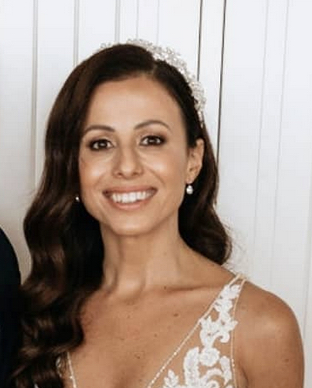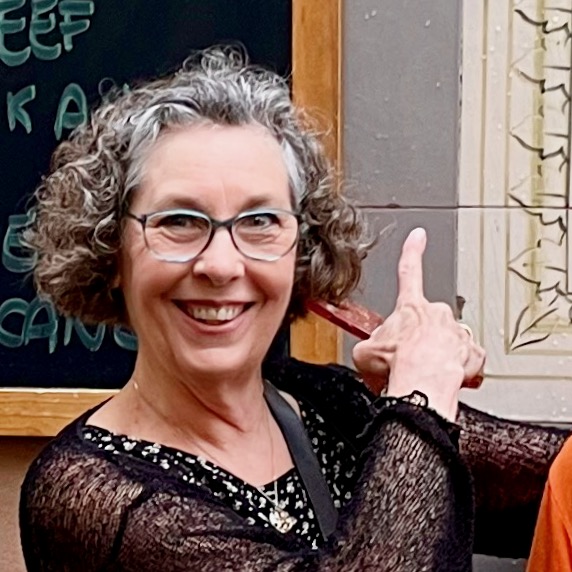

There are two ways to prepare saffron for use in cooking: brewing (with hot water) and blooming (with ice).
Brewing is the traditional way. Blooming is a modern technique created to preserve as much of the saffron’s colour, aroma and flavour as possible, as a little is lost whenever heat is applied.
Using either method, saffron can be soaked for as long as you like, including overnight, in which case cover it to avoid losing some of the aroma. If storing for longer than overnight, keep refrigerated.
Add saffron soaking liquid and the soaked threads to the dish towards the end of the cooking time to retain as much of the aroma and flavour as possible.
Saffron is water-soluble (and to a lesser extent, alcohol-soluble), but will not release its colour in fat, so always soak in water before adding to oil or fatty liquids.
Scroll down to the FAQ section to learn more about saffron.
Order premium Persian saffron at SaffronAndMore.com.au
You’ll need:
Here’s how to prepare saffron for cooking using both methods (scroll down for a step-by-step video):
Now you know how to prepare saffron you can make risotto Milanese (saffron risotto), saffron pilaf, biryani, bisteeya, bouillabaisse, saffron poached pears, Persian halva and Indian rice pudding.
Share page on:
With its rich golden colour, and even richer price tag, saffron has long symbolised power, wealth and the sacred. It’s the most expensive spice in the world, though gram for gram much less is needed than with other spices; just 15 tiny strands (about 0.0625g) are enough for most recipes.
Each purple Crocus sativus flower contains three reddish-orange stigmas attached to a central style (the female part) and surrounded by three yellowish stamens (the male part). The stigmas are dried to make saffron, though they are commonly but incorrectly often referred to as stamens (as Parya and I do in the video above), they’re also sometimes called strands, filaments or threads.
The name ‘saffron’ comes from the Farsi word zarparan meaning a flower (‘par’) that is as valuable as gold (‘zar’). Saffron originated in western Asia, around ancient Persia and has been cultivated in the eastern Mediterranean since early times. It was introduced to western Europe, via Spain, by 10th century Moorish traders and grows best in harsh climates like the Iranian desert, Spain’s high La Mancha plain, and Kashmir in India. It was grown in southwestern England from about the 14th century and is the only spice exported from Britain to the East.
The annual saffron harvest takes place in autumn and both picking and processing are very labour intensive. The flowers are picked at dawn before the main heat of the day and, as the plants are only about 15cm tall, this is back breaking work.
Indoors, the thicker, pale yellow style, with its three red stigmas attached, is plucked from each flower then dried to draw out the spice’s flavour and aroma. Between 160,000 and 250,000 flowers produce 5kg of stigmas, which becomes 1kg of dried saffron.
There are two main grades of saffron:
– the pure deep red-burgundy stigmas separated from the styles are long, firm, smooth and waxy looking;
– the stigmas mixed with up to 20% styles looks more orange-red, with the yellow threads of the styles apparent; styles don’t contribute colour but do impart classic saffron taste.
Given its scarcity and the labour-intensive nature of its production, there is no such thing as cheap saffron. Marigold, safflower, corn silk and dyed coconut fibres have all been used as saffron imposters and tartrazine has been found in products labelled ‘saffron powder’. The best way to ensure you’re buying real saffron is to buy whole saffron threads in small quantities from a reputable supplier.
Store saffron in an airtight container in a cool, dark place (not refrigerated) for up 2 years.
Saffron adds a gorgeous golden colour and heady aroma to many sweet and savoury dishes, including Indian biryani, Spanish paella, French bouillabaisse, North African bisteeya and many Persian dishes. See the step-by-step guide above on how to prepare saffron for using in these and other dishes. Saffron has also been used as a dye, in perfumes and cosmetics and has been attributed many medicinal qualities. The Persians use it as a heart and brain tonic, to induce sleep and to boost the mood; Indians believe it aids digestion; and ancient Greeks and Romans considered it an aphrodisiac.







